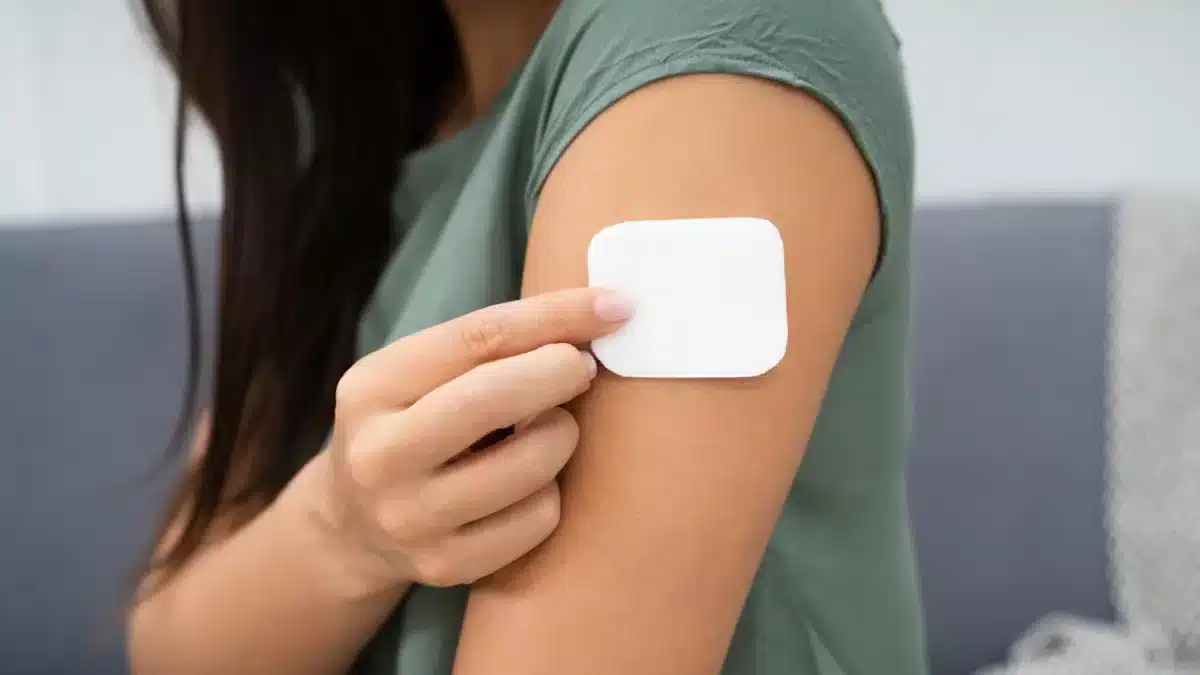Know How Effective is the Birth Control Patch
In today’s world, various forms of birth control are gaining popularity as prevalent contraception methods.
One such form of contraception is the birth control patch, which contains the hormones Estrogen and Progestin.
According to the National Health Service (NHS), when used accurately, the patch is over 99% effective in preventing pregnancy.
The patch comprises identical hormones to the combined pill and operates similarly.
To learn more about the patch and how effective is the birth control patch read this informative article.
How effective is the birth control patch
The patch boasts a 99% effectiveness rate when used perfectly to prevent pregnancy.
However, with typical use or error while using the patch, effectiveness drops to about 93%. This means that about 7 out of 100 patch users may get pregnant each year.
The effectiveness of the patch depends on how well the user follows the instructions for use.
Some factors that can affect the patch’s effectiveness include forgetting to change the patch, taking certain medications, and smoking.
It’s essential to follow the instructions and use the patch correctly for it to be as effective as possible.
What reduces the effectiveness of the patch

The following are the factors that can reduce the effectiveness of the birth control patch.
- Forgetting to change the patch: Effectiveness decreases, and the risk of pregnancy rises when the patch is applied late, missed weekly, or removed prematurely
- Applying the patch to dirty skin: Applying the patch to an area of the skin with lotion or cream can make it harder for the patch to adhere properly
- Taking certain medications: Certain medications, like anti-seizure drugs and St. John’s Wort, may reduce the patch’s effectiveness. Users on these medications might need additional contraception
- Smoking: Smoking cigarettes while using the patch can increase the risk of certain side effects and reduce its effectiveness
- Weight: The patch may not work as well to prevent pregnancy if an individual has a higher weight of more than 90 kg
How long does the patch take to work
The birth control patch takes about seven days to start working effectively.
If the patch is applied on the first day of the menstrual cycle, it will provide immediate protection against pregnancy.
However, if the patch is applied at any other time during the menstrual cycle, it will take seven days to become effective.
During the first week of using the patch, it’s advisable to use additional contraception, such as condoms, to reduce the risk of pregnancy.
It’s essential to follow the instructions for using the patch correctly to ensure its effectiveness in preventing pregnancy.

Looking for a reliable and convenient solution for confident family planning?
Get the best oral contraceptives from WowRx now
YasminFemilonWho should use the patch
The birth control patch is suitable for individuals who are looking for a convenient and effective form of contraception.
It may be a good option for those who have difficulty remembering to take a daily pill, as the patch is applied once a week.
The patch may be recommended for those who can’t use Estrogen pills due to certain health reasons, offering Progestin-only alternatives.
However, it’s important for individuals to consult with their healthcare provider to determine if the patch is the right choice.
Side effects of the patch

The birth control patch, like other hormonal contraceptives, can cause side effects.
Common side effects of the patch are similar to those of the birth control pill and may include:
- Irregular menstrual bleeding
- Nausea
- Headaches
- Dizziness
- Breast tenderness
- Mood changes
- Skin responses at the patch application site
- Menstrual cramps
Conclusion
In conclusion, the birth control patch is a highly effective contraceptive method when used correctly, with a 99% success rate in preventing pregnancy with perfect use.
However, its effectiveness drops to around 93% with typical use, emphasizing the importance of adhering to instructions for best results.
Factors influencing effectiveness range from lifestyle choices, such as smoking, to external factors like medication interactions.
It takes about seven days for the patch to become fully effective, and additional contraception is advisable during the initial week.
While the patch is generally well-tolerated, users should be aware of potential side effects such as nausea, headaches, dizziness, etc, and consult healthcare providers for significant changes.
Frequently Asked Questions
Is the patch as effective as the pill?
Ongoing studies indicate the patch is equally effective as the pill. Approximately 9 out of 100 couples may have unintended pregnancies in the first year. Proper use is crucial; delaying application or removing it too early reduces effectiveness, increasing the chance of pregnancy.
How effective is a birth control patch without pulling out?
The effectiveness of the birth control patch, used without pulling out, is around 93% with typical use. It drops to about a 7% failure rate, indicating a risk of unintended pregnancy within the first year. It’s crucial to follow usage instructions for optimal effectiveness.
Can you get pregnant on the birth control patch?
When used correctly, the patch is over 99% effective. In real-world use, about 8 in 100 women annually may get pregnant due to forgetting to change the patch (92% effective). Change the patch weekly for three weeks, followed by a patch-free week.
What causes birth control patches to fail?
Forgetting to change it is a common reason, reducing effectiveness to 92%. Other factors include applying it to dirty skin, certain medications, and smoking. Maintaining proper usage is crucial for optimal effectiveness.
WowRx uses only high-quality sources while writing our articles. Please read our content information policy to know more about how we keep our content reliable and trustworthy.






